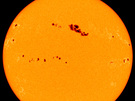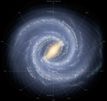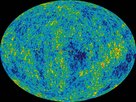Learn about astronomy
Why astronomy?
 © Camille Flammarion (1888) |
This widely reproduced woodcut was published for the first time in 1888 in Camille Flammarion's book "L'atmosphère". It depicts a man who sticks his head through the firmament in order to behold the workings of the universe.
Fun, excitement and a deeper understanding of the world
Today, astronomy is also a very rewarding hobby for many people. Whether the aim is to understand simple physical phenomena in the universe, to observe the stars using a homemade telescope, or to test visionary ideas from a science-fiction novel against Einstein's theory of relativity, astronomy allows you to leave everyday life behind, to expand your horizons and to explore the conditions of human existence. If you would like to know more about the universe you live in, you can find information about astronomical societies, observatories, planetariums and research institutions from all over the world at astronomyclubs.com2009 is the International Year of Astronomy. Let us enjoy astronomy together.
German Aerospace Center
Learn about astronomy
Why astronomy?
 © Camille Flammarion (1888) |
This widely reproduced woodcut was published for the first time in 1888 in Camille Flammarion's book "L'atmosphère". It depicts a man who sticks his head through the firmament in order to behold the workings of the universe.
Fun, excitement and a deeper understanding of the world
Today, astronomy is also a very rewarding hobby for many people. Whether the aim is to understand simple physical phenomena in the universe, to observe the stars using a homemade telescope, or to test visionary ideas from a science-fiction novel against Einstein's theory of relativity, astronomy allows you to leave everyday life behind, to expand your horizons and to explore the conditions of human existence. If you would like to know more about the universe you live in, you can find information about astronomical societies, observatories, planetariums and research institutions from all over the world at astronomyclubs.com2009 is the International Year of Astronomy. Let us enjoy astronomy together.
German Aerospace Center









